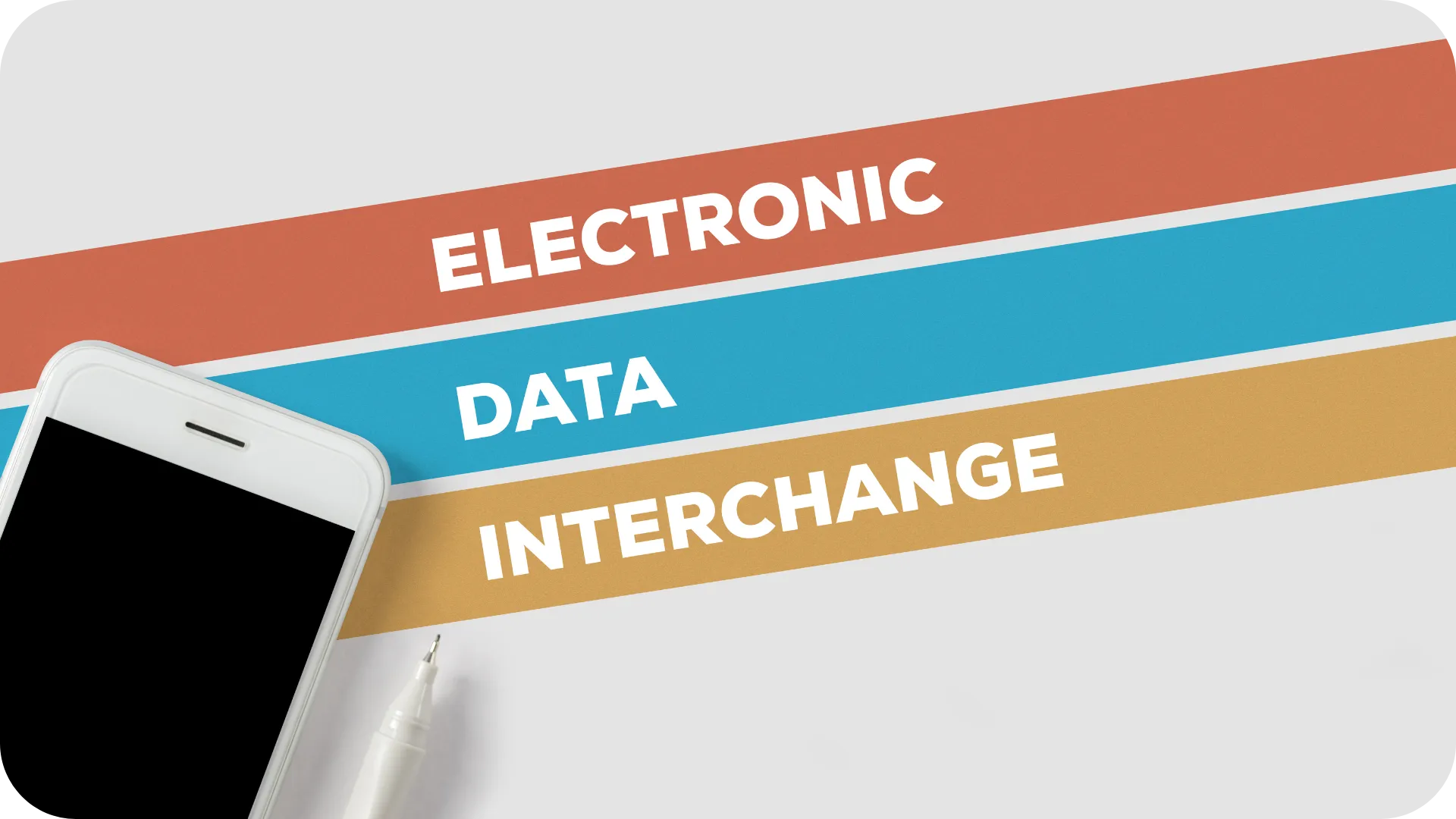Electronic Data Interchange (EDI): Revolutionizing Business Communication
Electronic Data Interchange (EDI) is a pivotal technology in
the realm of business-to-business (B2B) communications. By enabling the
automated exchange of standardized business documents between organizations,
EDI enhances efficiency, reduces errors, and streamlines operations. This blog
delves into the intricacies of EDI, its workings, benefits, implementation, and
future prospects, while also addressing frequently asked questions about this
transformative technology.

What is EDI?
EDI stands for Electronic Data Interchange. It is the computer-to-computer exchange of business documents in a standard electronic format between business partners. EDI replaces paper-based documents such as purchase orders, invoices, and shipping notices, facilitating seamless and efficient communication between different companies' systems.
Key Features of EDI:
- Standardization: EDI uses standardized formats like ANSI X12, EDIFACT, TRADACOMS, and ebXML, ensuring consistent and interpretable data exchange across various systems.
- Automation: EDI automates data exchange, reducing manual intervention and the associated risks of errors and delays.
- Integration: EDI integrates with internal systems such as Enterprise Resource Planning (ERP) and Warehouse Management Systems (WMS), ensuring seamless data flow across business processes.

How EDI Works
EDI operates through a series of steps that ensure the secure and accurate transmission of data between trading partners.
- Document Preparation: The process begins with the creation of a business document in the sender's internal system (e.g., an ERP system). This document can be a purchase order, invoice, or any other standardized business communication.
- Document Translation: The created document is then translated into an EDI standard format using EDI translation software. This step ensures that the document adheres to the agreed-upon EDI standards and can be interpreted correctly by the recipient’s system.
- Document Transmission: The translated EDI document is transmitted to the recipient through a secure communication channel. Common methods of EDI transmission include:
- Value Added Networks (VANs): Third-party networks that provide secure data transmission services.
- Direct EDI (Point-to-Point): Direct communication between trading partners over the internet.
- EDI via AS2: Applicability Statement 2 (AS2) is a protocol for securely transporting EDI documents over the internet.
- Document Reception: The recipient’s EDI system receives the transmitted document, acknowledges receipt, and translates the document from the EDI format into a format compatible with their internal systems.
- Data Processing: Finally, the translated document is processed within the recipient’s system, triggering necessary business operations such as order processing, invoicing, or shipping.

Benefits of EDI
The adoption of EDI offers numerous advantages that significantly enhance business operations and competitiveness.
1. Efficiency and Speed:
- Reduced Processing Time: Automated data exchange eliminates manual data entry, reducing processing time for business documents.
- Faster Transactions: EDI accelerates the order-to-cash cycle by enabling quicker document exchange and processing.
2. Accuracy and Error Reduction:
- Minimized Errors: Automation reduces the likelihood of human errors in data entry and document handling.
- Improved Data Quality: Standardized formats ensure consistency and accuracy in data exchange.
3. Cost Savings:
- Reduced Operational Costs: EDI decreases the need for paper, printing, postage, and manual labor, leading to significant cost savings.
- Lower Inventory Costs: Faster processing times and improved supply chain visibility enable better inventory management and reduced carrying costs.
4. Enhanced Business Relationships:
- Strengthened Partnerships: Reliable and efficient communication fosters stronger relationships between trading partners.
- Improved Customer Satisfaction: Faster and more accurate order fulfillment enhances customer satisfaction and loyalty.
5. Environmental Benefits:
- Reduced Paper Usage: EDI supports paperless transactions, contributing to environmental sustainability by reducing paper consumption.
EDI Implementation
Implementing EDI involves several critical steps to ensure successful adoption and integration into existing business processes.
1. Planning and Preparation:
- Define Objectives: Clearly outline the goals and objectives of implementing EDI, such as improving efficiency, reducing costs, or enhancing customer satisfaction.
- Identify Trading Partners: Determine which trading partners will be involved in the EDI implementation and ensure they are prepared for the transition.
2. Selecting an EDI Solution:
- In-House vs. Outsourced: Decide whether to implement an in-house EDI system or use a third-party EDI service provider. Each approach has its advantages and considerations.
- EDI Standards and Protocols: Choose the appropriate EDI standards and communication protocols based on industry requirements and trading partner agreements.
3. System Integration:
- ERP and WMS Integration: Integrate the EDI system with existing internal systems such as ERP, WMS, and accounting software to ensure seamless data flow.
- Data Mapping and Translation: Set up data mapping and translation to convert internal document formats to EDI standards and vice versa.
4. Testing and Validation:
- Pilot Testing: Conduct pilot tests with selected trading partners to identify and resolve any issues before full-scale implementation.
- Validation and Compliance: Ensure that the EDI transactions comply with industry standards and regulatory requirements.
5. Training and Support:
- Employee Training: Provide comprehensive training for employees involved in EDI processes to ensure smooth adoption and operation.
- Ongoing Support: Establish a support system to address any technical issues or challenges that arise during and after implementation.

The Future of EDI
As technology continues to evolve, EDI is expected to undergo significant advancements, further enhancing its capabilities and applications.
1. Integration with Emerging Technologies:
- Blockchain: Integrating blockchain technology with EDI can enhance data security, transparency, and traceability in B2B transactions.
- Internet of Things (IoT): IoT devices can provide real-time data for EDI transactions, improving supply chain visibility and efficiency.
2. Cloud-Based EDI:
- Scalability and Flexibility: Cloud-based EDI solutions offer greater scalability and flexibility, allowing businesses to easily adapt to changing needs and growth.
- Cost-Effectiveness: Cloud solutions can reduce the need for extensive on-premises infrastructure, lowering implementation and maintenance costs.
3. Enhanced Data Analytics:
- Big Data and AI: Leveraging big data analytics and artificial intelligence can provide deeper insights into business operations, enabling more informed decision-making.
- Predictive Analytics: Predictive analytics can anticipate trends and demand, optimizing supply chain management and inventory control.
4. Expanded Use Cases:
- B2G (Business-to-Government): EDI is increasingly being adopted in B2G transactions, streamlining interactions between businesses and government agencies.
- Global Trade: EDI facilitates international trade by standardizing cross-border transactions and ensuring compliance with global trade regulations.
Frequently Asked Questions about EDI
1. What is EDI?
Answer: EDI, or Electronic Data Interchange, is the computer-to-computer exchange of standardized business documents between organizations, replacing traditional paper-based communication.
2. How does EDI work?
Answer: EDI works by translating business documents into standardized formats, transmitting them through secure channels, and integrating them into the recipient's internal systems for automated processing.
3. What are the benefits of using EDI?
Answer: Benefits of EDI include increased efficiency, reduced errors, cost savings, enhanced business relationships, and environmental sustainability.
4. What types of documents can be exchanged using EDI?
Answer: Common EDI documents include purchase orders, invoices, shipping notices, order confirmations, and payment instructions.
5. What are the common EDI standards?
Answer: Common EDI standards include ANSI X12 (North America), EDIFACT (global), TRADACOMS (UK), and ebXML (global).
6. How do I implement EDI in my organization?
Answer: Implementing EDI involves planning and preparation, selecting an EDI solution, integrating with internal systems, testing and validation, and providing training and support.
7. What is the difference between in-house EDI and outsourced EDI?
Answer: In-house EDI involves managing the EDI infrastructure and processes internally, while outsourced EDI relies on third-party service providers to handle EDI transactions and infrastructure.
8. How does EDI improve supply chain management?
Answer: EDI improves supply chain management by enabling real-time data exchange, reducing processing times, minimizing errors, and providing better visibility into inventory and shipments.
9. What are the security considerations for EDI?
Answer: Security considerations for EDI include using secure transmission protocols (e.g., AS2), encryption, authentication, and ensuring compliance with data protection regulations.
10. What is the future of EDI?
Answer: The future of EDI involves integration with emerging technologies like blockchain and IoT, adoption of cloud-based solutions, enhanced data analytics, and expanded use cases in B2G transactions and global trade.
CONNECT
Also, if you need help, Let’s connect.
Get 45 Min Free Consultation with me: Book An Appointment
Join or Connect: https://bit.ly/m/PrashantRaj
Thank You


